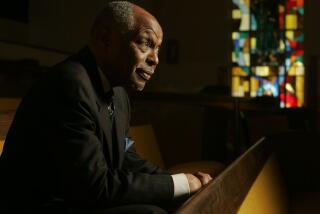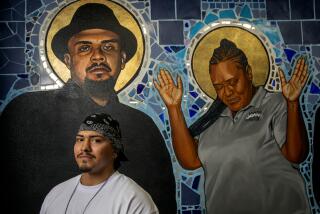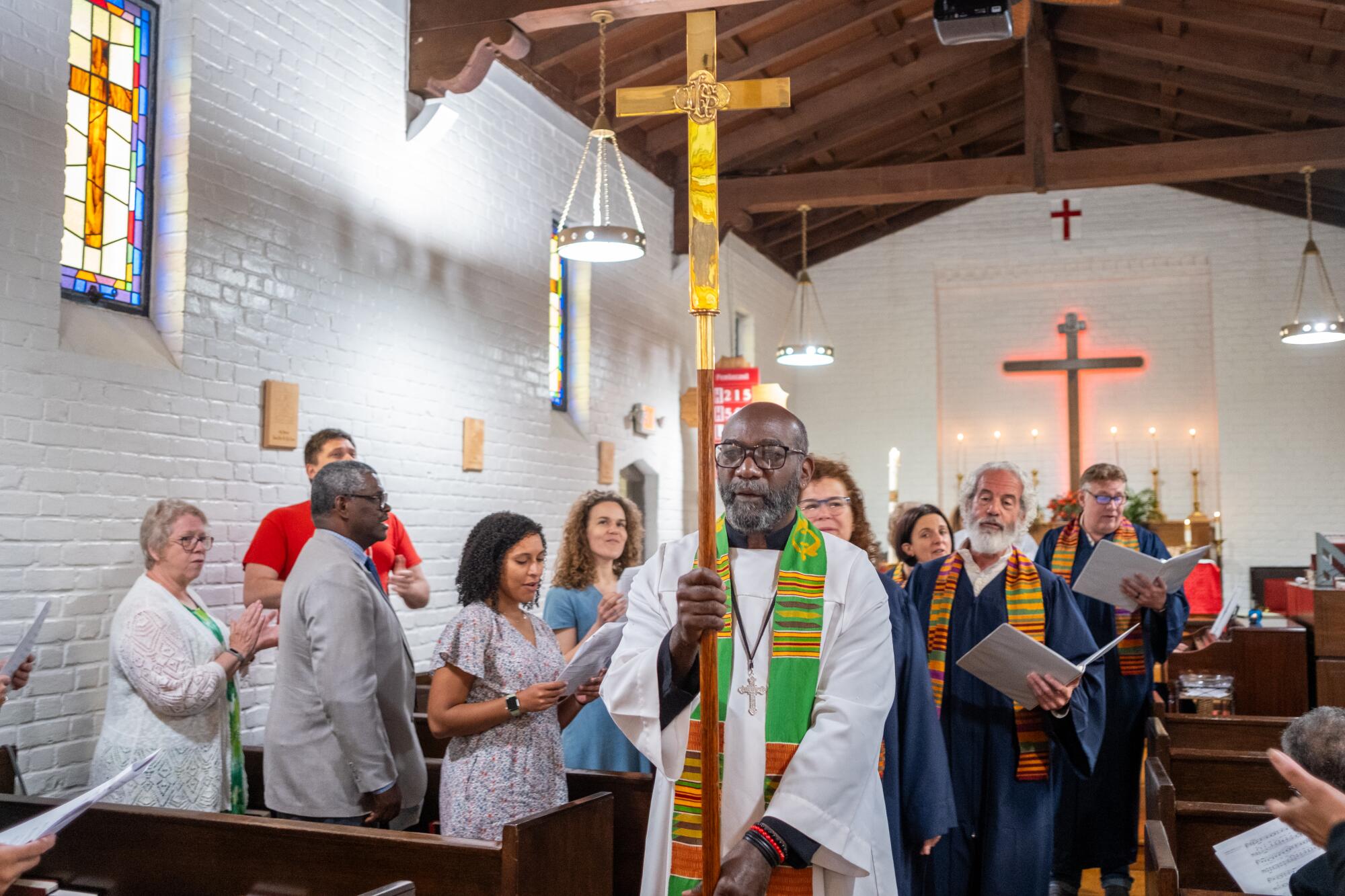
Bishop John H. Taylor followed a glimmering golden cross beyond the white bricks and into St. Barnabas Episcopal Church, where dozens had gathered to mark the Pasadena church’s century-long march through history.
The angelic sounds of choir members draped in lavish robes and colorful stoles reverberated off stained glass windows into pews packed with generations of worshipers, who wished peace unto each other before enjoying one of the church’s legendary feasts.
“It’s a once in a hundred years event,” said Taylor, adorned in cardinal red vestments and a gold-lined mitre as he stepped to the pulpit to pay tribute to the Black women who birthed the region’s first Black Episcopal church and rebuked Pasadena’s Jim Crow-era racism.
Today, that historically Black church is home to a rainbow coalition of worshipers. At a time when Black churches across the country are shrinking and people are turning away from religion, St. Barnabas members are gearing up for a second century, reflecting on the past and opening their arms to the future by welcoming God’s children from all walks of life.
Marco White, a longtime member of the church, calls that “love — St. Barnabas style.” It’s the kind of unconditional acceptance that St. Barnabas’ founders were denied.
They were Black Episcopalians who had migrated here from the South in the early 1900s. But when they tried to attend the venerable All Saints Church — the first Episcopal parish in Pasadena and now one of the country’s most progressive — they were turned away because of the color of their skin.
“It was basically the same thing that had happened in churches all through the South,” said the Rev. V.R. Marianne Zahn, the newest faith leader of St. Barnabas.
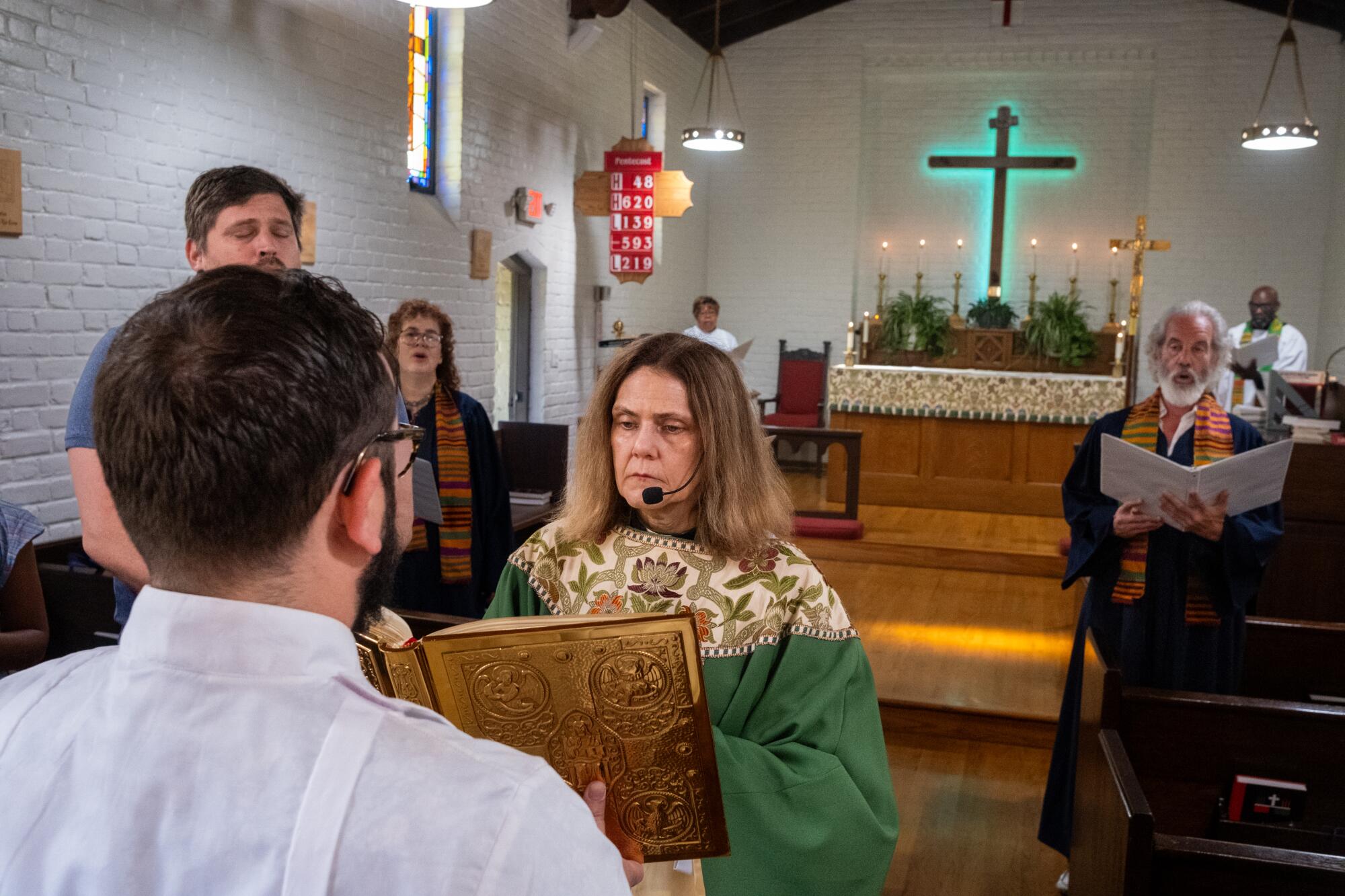
But these newcomers were determined to uphold their faith. So eight Black women united in 1909 “to organize an Episcopal mission” that would soon become known as Saint Barnabas Guild, according to handwritten minutes in the diocesan archives. The group held worship services in private homes and various places around Pasadena, and supported their emerging ministry with food sales, until the Los Angeles Diocese formally recognized St. Barnabas Episcopal Church in 1923.
Lacking a traditional place of worship, the first official church services were held at founder Georgia Weatherton’s Pasadena home and led by lay leaders from All Saints, until the early 1930s when two families who were members at All Saints donated property and enough money to build St. Barnabas church.
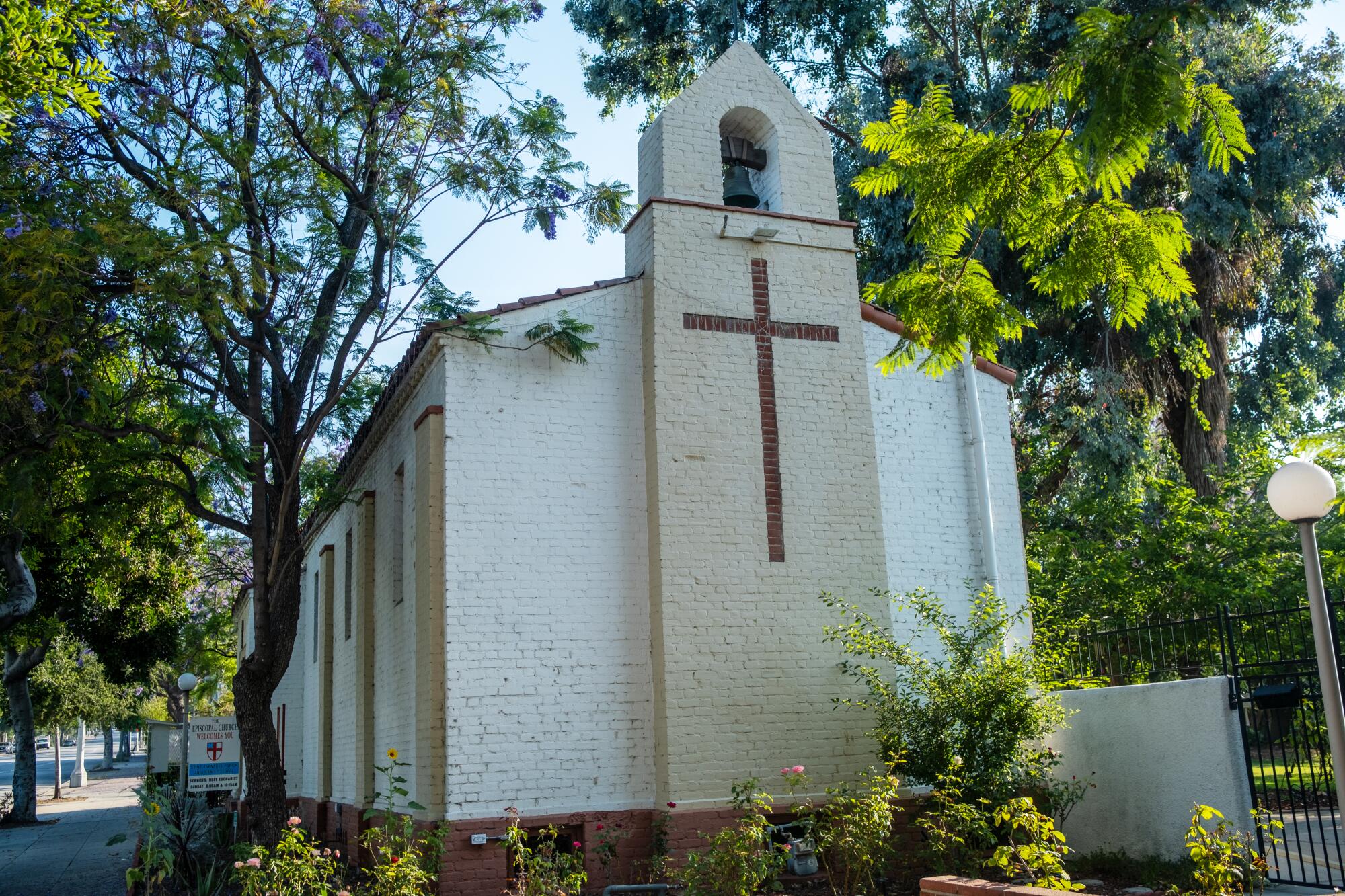
Today, the adobe-style complex on Fair Oaks Avenue in Northwest Pasadena has a small sanctuary, spacious dining hall and vibrant memorial garden — where a rosebush honors each founder and a new flower is planted for every woman in the congregation who reaches 100 years old.
But it is more than the modest brick building suggests; it’s a testament to the faith and resilience of generations of men, women and children who worked tirelessly to ensure the legacy of St. Barnabas is carried on.
“They Thought They Buried Us, But God Actually Planted Us” a banner outside the church proclaims. And old-timers like White validate that sentiment.
The pews inside are where White’s grandmother held him as a child, and where four generations of his family have worshiped since. Still White is a relative newcomer when compared to folks like Michael Mims, a proud descendant of one of those eight founding matriarchs, his aunt Rosebud Lewis Mims.
Mims serves as the church’s historian in residence. He’s accumulated artifacts, posters and so much “history that you cannot find in history books” the Pasadena Historical Society tapped his expertise for a project on his mother, the late Lillian Mims, a devout Methodist who served as Pasadena Unified’s first Black PTA President and helped with the city’s public swimming pool.
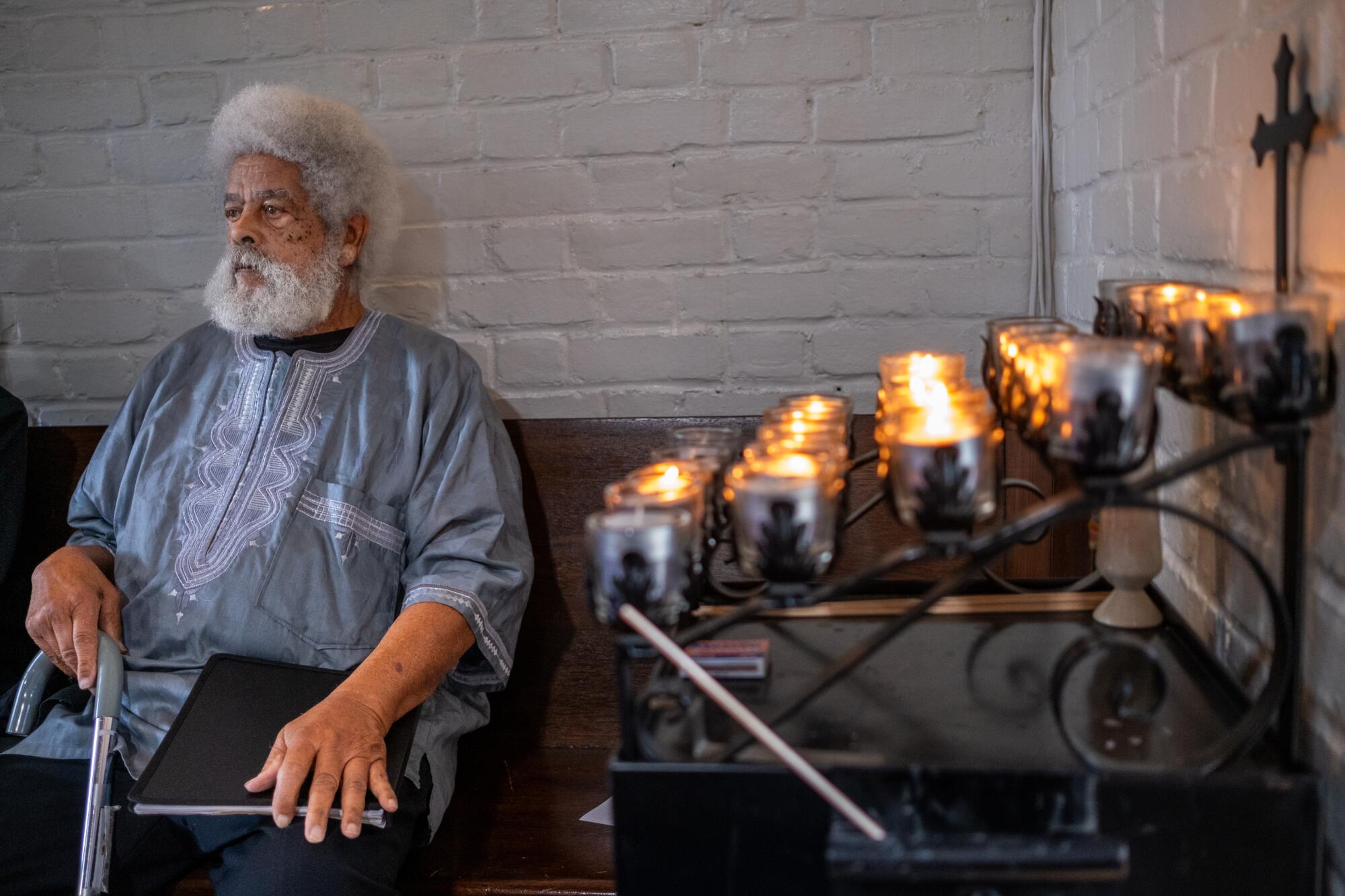
Mims said neither his mother nor his Baptist father forced him to attend church in his youth. But even as a young child, he would wait on a stoop every Sunday morning to catch a glimpse of his dream car, “a big ol’ yellow Lincoln.” At five years old, unable to contain his curiosity, he jumped inside when the owner came by to pick up his aunt for church. That began his lifelong tradition of church attendance.
In the decades since then, the 84-year-old, who is easily recognizable by his trademark white afro and beard, claims he’s walked 100 miles throughout the small church grounds while carrying the cross, lighting the candles, or serving in other capacities as an altar boy.
Long time parishioner Hazel Powell vividly recalls Mims as a boy, skipping with his Aunt Laura on the way to Sunday School. That passion eventually rubbed off on Mims’ siblings, who joined him at St. Barnabas where, with lifelong peers, his family built bonds that helped sustain the church through uncertain times.
Ask Sylvia Strong Wiggins and she’ll tell you she’s been attending St. Barnabas longer than anybody else alive today. A member since 1939, she was a toddler in the pews when its first resident vicar, the Rev. W. Alfred Wilkins — a dynamic young African American priest lured west from New Jersey — led sermons in the sanctuary. She later attended Sunday school in a wooden house, which no longer exists.
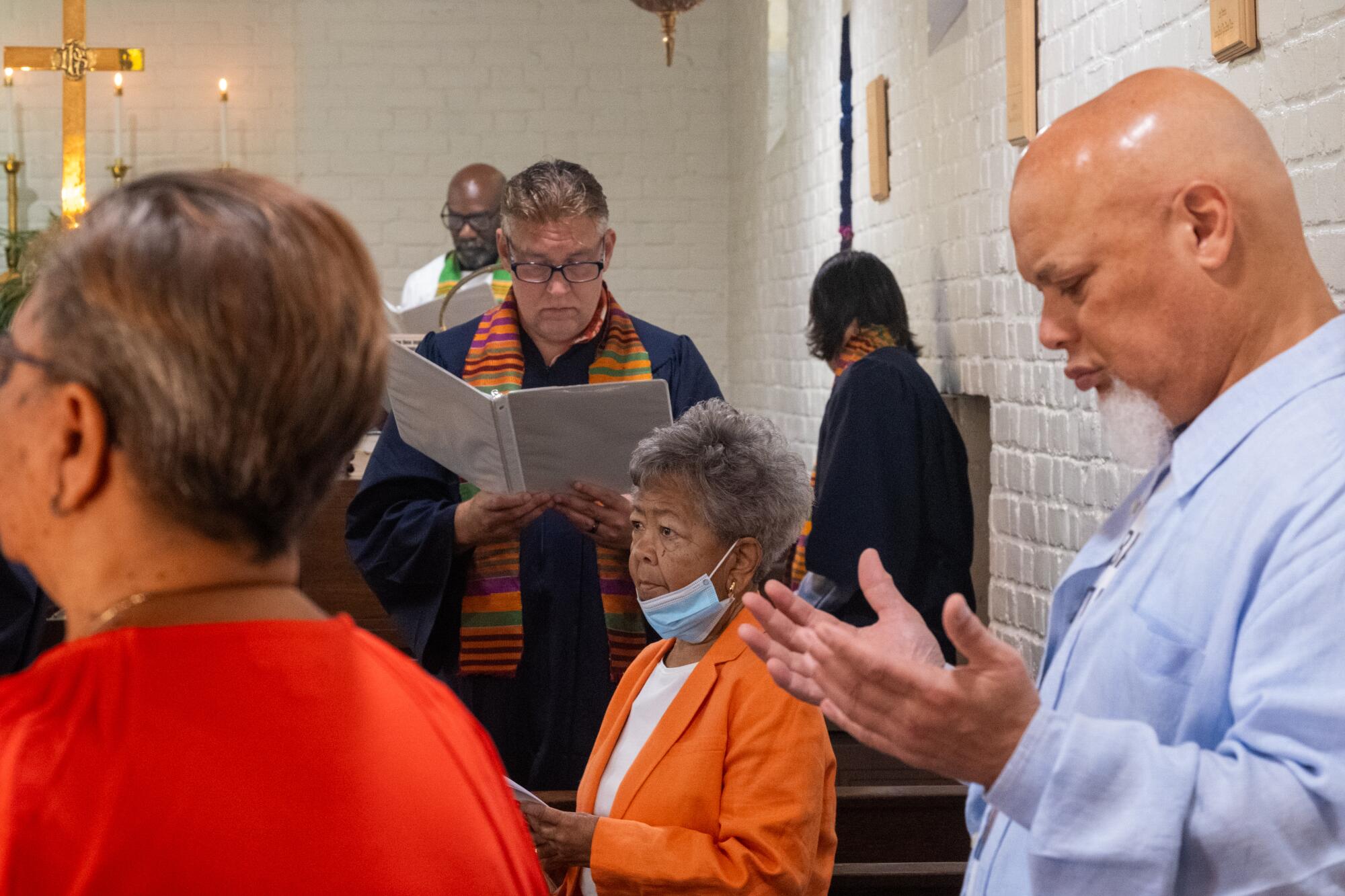
But the best of times, Strong Wiggins recalls, came during periods of service with the St. Mary’s Guild, one of the church’s service arms, known for serving mouthwatering meals and “the best fried chicken in LA county.”
With his cane, Mims points to portraits of famous figures, including Jackie Robinson and Lena Horne, who came from far and wide to enjoy the annual church dinners, hosted at prominent Pasadena hotels and concert sites.
But life beyond the walls of St. Barnabas wasn’t always as pleasant, according to Strong Wiggins, who reminded centennial attendees that “in those days we were referred to as Negroes.”
Still, the pair of 84-year-olds find it remarkable that their star-studded run-ins still have currency, considering the whirlwind of change, in the church and the community, during the last century.
Economic conditions or old age have forced congregation members out of the area over the years. But St. Barnabas maintained relevancy by reflecting “the beautiful gumbo and diversity of Northwest Pasadena,” White said. “St. Barnabas is so much more than a predominantly Black church.”
In fact their new pastor — sent by the diocese and embraced by the church — is white. Prior to arriving at St. Barnabas in the midst of the pandemic in 2022, Zahn wondered how the congregation would welcome her as its 19th faith leader, considering the church’s historical roots and faith traditions.
But it wasn’t long until she felt the love — St. Barnabas style. “We are very open to working with others to create the kingdom that we want to see,” Zahn said.
St. Barnabas is committed to making church “a comfortable place, not only for the people who have been coming here since they were kids,” but for people of other backgrounds as well, Zahn said.
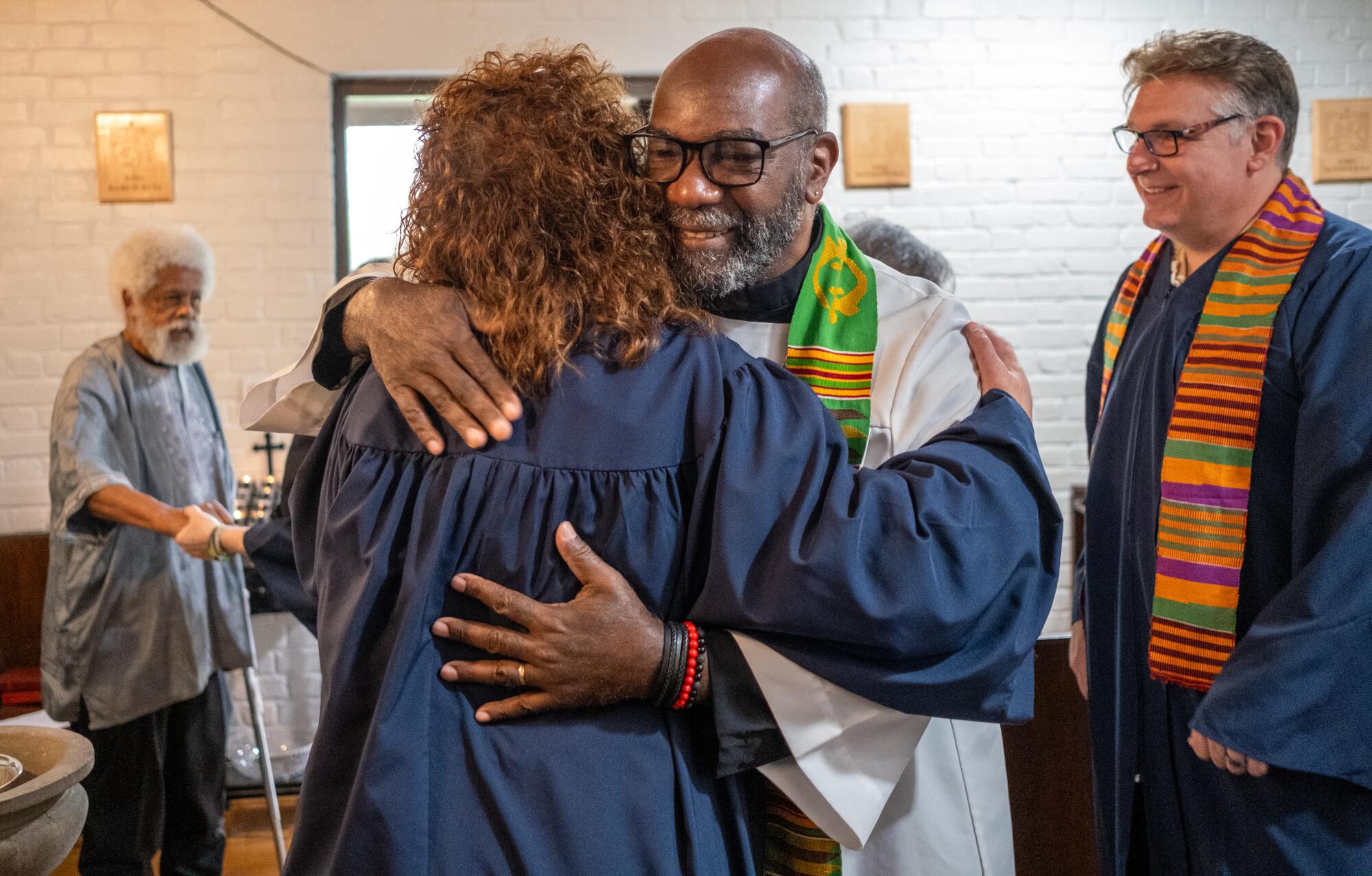
Spanish is quite prevalent in the church halls today and nearly a third of the congregation has roots abroad, in places like Jamaica, Panama and Costa Rica. Younger faces also mingle among the crowd, leading to thoughts of St. Barnabas eventually becoming the site of a seminary.
But the dream can’t mask the daunting realities of next-century challenges, which are always at the forefront of White’s mind.
He can’t help but worry that increasing rents in the area could spell the end of the historic church before it’s able to adapt to an evolving neighborhood.
“We have a beautiful past,” White said. “The first 100 years were about surviving.” He paused, then broke into tears. “The next 100 will be about thriving.”
More to Read
Sign up for Essential California
The most important California stories and recommendations in your inbox every morning.
You may occasionally receive promotional content from the Los Angeles Times.
